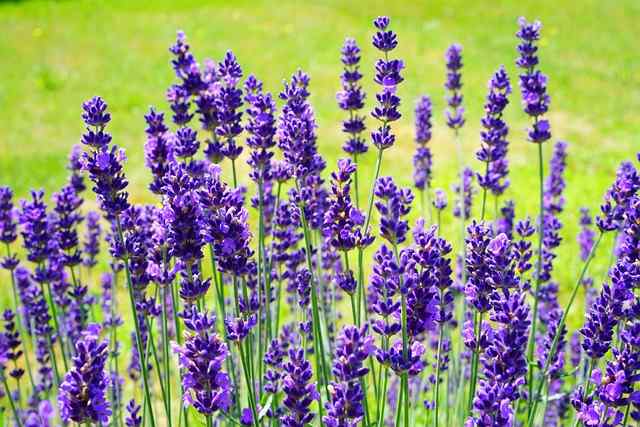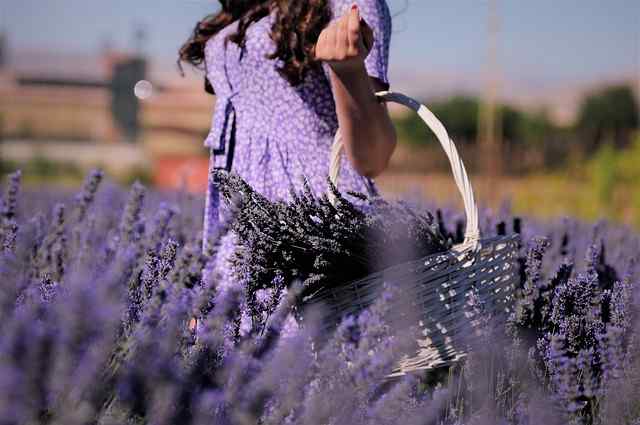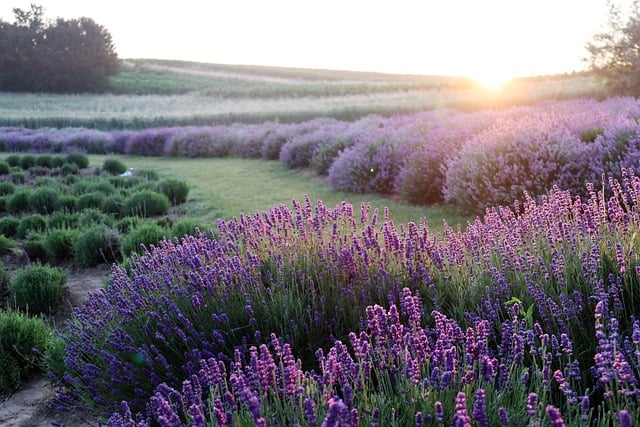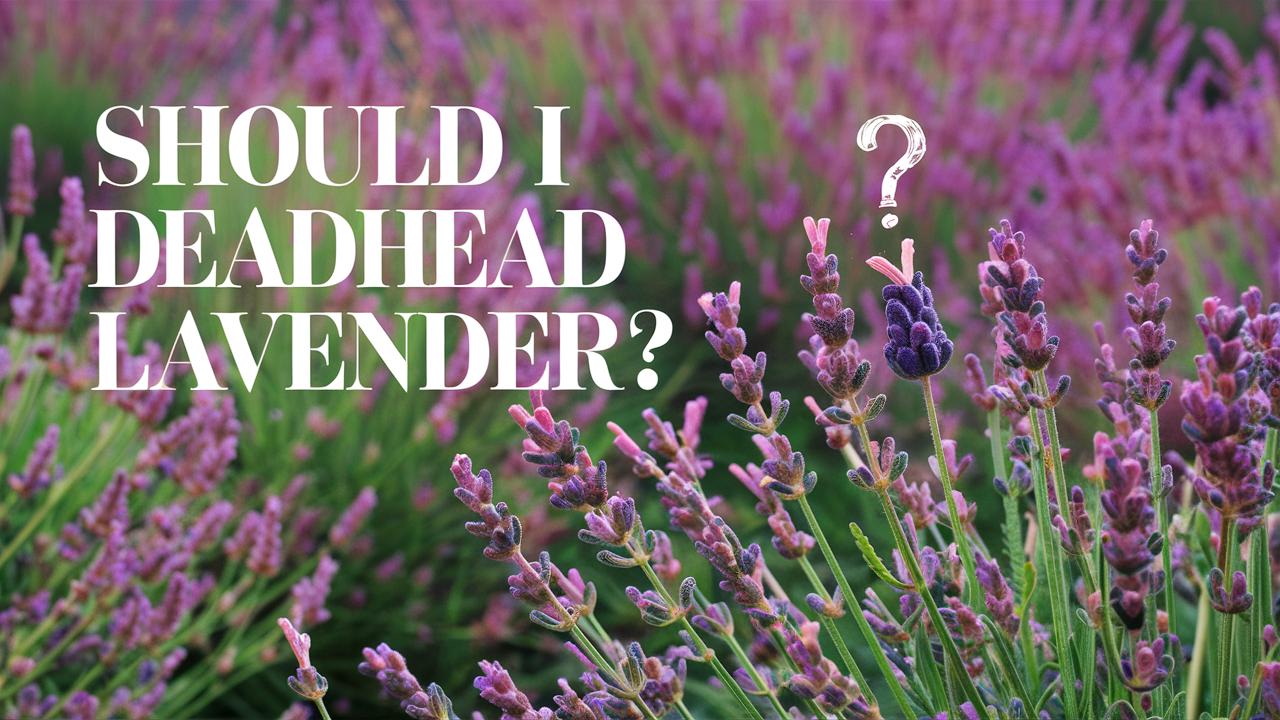In this comprehensive guide, we’ll delve into the practice of deadheading lavender, exploring its benefits, techniques, and tips to keep your lavender plants thriving.
What is Deadheading and Why is it Important?
Deadheading is the process of removing spent flowers from a plant. This practice plays a crucial role in promoting healthy plant growth and ensuring that your lavender maintains its beauty throughout the blooming season. When you remove the old flowers, you encourage the plant to focus its energy on producing new growth rather than setting seeds.
Benefits of Deadheading Lavender

Encourages More Blooms: One of the primary reasons to deadhead lavender is to encourage the plant to produce more flowers. By removing the spent blooms, you signal to the plant that it should continue flowering instead of shifting its energy toward seed production.
Enhances Aesthetic Appeal: A tidy, well-maintained lavender plant looks more appealing in the garden. Deadheading keeps the plant looking its best, with clusters of vibrant blooms rather than brown, withered flowers.
Improves Air Circulation: Removing old blooms can enhance air circulation around the plant, reducing the risk of diseases that thrive in humid or crowded environments.
Extends the Blooming Period: Regularly deadheading lavender can extend the flowering season. With more energy directed toward producing new blooms, you can enjoy the delightful display of lavender blossoms for a longer duration.
Promotes Healthy Growth: Deadheading can stimulate new growth by encouraging the development of new shoots and stems, leading to a sturdier and more vigorous plant overall.
Now that we understand the benefits, let’s explore the best times to deadhead lavender.
When to Deadhead Lavender

Timing is essential when it comes to deadheading lavender. Most gardeners choose to deadhead after the first bloom cycle, typically in late spring or early summer, depending on the variety of lavender and your specific climate.
Key Timing Considerations
Observe Flowering Patterns: Different lavender varieties have distinct blooming periods. Common types like English lavender typically flower from late spring through early summer, while others like French lavender may bloom later. Monitor your plants closely to determine when the flowers are starting to fade.
Monitor for Seed Formation: As the flowers bloom and begin to die off, you’ll notice seed pods forming. This is a clear sign that it’s time to deadhead. If you see these pods, quickly get to work to keep your lavender producing beautiful blooms.
Climate Considerations: In warmer climates, lavender may bloom multiple times throughout the growing season. In these cases, it’s beneficial to deadhead after each wave of blooming.
Gardening Calendar: Use a gardening calendar to keep track of when you usually see blooms starting and ending in your region. This will help you establish a routine for deadheading.
How to Deadhead Lavender: A Step-by-Step Guide

Deadheading lavender isn’t a complicated process, but employing the right technique can make all the difference in maintaining a flourishing plant. Here’s a step-by-step guide to successful deadheading.
1. Gather Your Tools
Before you get started, gather the necessary tools:
Pruning shears or scissors
Gardening gloves (optional, depending on your comfort)
A collection container for the spent blooms
2. Identify the Spent Blooms
Look for flowers that have turned brown and crispy. These should be easily identifiable as they no longer display the vibrant color associated with fresh lavender.
3. Make the Cut
Using your pruning shears, gently clip the flower stalks just above the leaves or the first set of healthy leaves. Avoid cutting into the woody part of the stem, as this can stress the plant. Aim for a clean cut to minimize damage to the plant.
4. Dispose of Spent Blooms
Place the clipped flower stalks in your collection container. Composting is a great option if the blooms are healthy and free from disease, contributing to the cycle of nourishment in your garden.
5. Water and Care
After deadheading, it’s essential to continue caring for your lavender. Water the plant as needed, ensuring it has access to the right nutrients. Healthy soil and proper watering can further encourage new growth.
6. Monitor for New Growth
Keep an eye on your lavender for new flower spikes. As new blooms develop, consider deadheading again after this cycle if necessary.
Additional Tips for Maintaining Lavender Health

While deadheading is an essential part of lavender care, there are other practices you can adopt to keep your plants healthy and thriving.
1. Pruning for Longevity
In addition to deadheading, consider pruning lavender plants at least once a year, preferably in late summer after the blooming season. This rejuvenating practice encourages bushy growth and helps prevent your lavender from becoming woody or leggy.
2. Provide Adequate Sunlight
Lavender thrives in sunny environments. Ensure your plants receive at least 6 to 8 hours of sunlight daily. If you notice your plants becoming leggy, it may be a sign that they aren’t getting enough light.
3. Soil and Fertilization
Lavender thrives in well-draining soil. Consider amending your garden soil with sand or gravel to promote drainage. Use a balanced fertilizer or a compost-enriched soil to ensure your lavender gets the nutrients it needs, but avoid excessive fertilization, as lavender prefers less nitrogen.
4. Watering Wisely
Water your lavender plants deeply but infrequently. Allow the soil to dry out between watering to prevent root rot. Overwatering is one of the common issues that can lead to poor plant health.
5. Monitor Pests and Diseases
Keeping an eye on your lavender for pests or diseases is crucial to its longevity. Aphids and whiteflies can be problematic but are often manageable through natural predators like ladybugs. Additionally, ensure your plants aren’t experiencing fungal issues by avoiding watering in the evening.
Conclusion: The Pleasure of Deadheading Lavender
In conclusion, deadheading lavender is a beneficial practice that any gardener, from novice to expert, can easily embrace. By understanding the importance of removing spent blooms, the right timing, and effective deadheading techniques, you can significantly enhance your lavender plants’ beauty and longevity.





